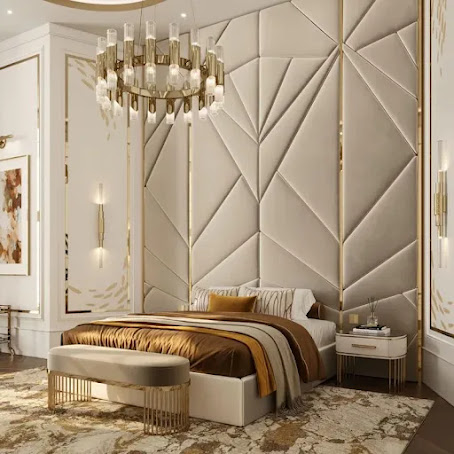Japandi Interior Design: The Harmonious Blend of Japanese and Scandinavian Aesthetics
Japandi
interior design is a contemporary design style that combines the best elements
of Japanese and Scandinavian aesthetics, creating a serene, minimalist, and
functional living space. The term "Japandi" is a fusion of
"Japanese" and "Scandi," signifying the integration of two
distinct design philosophies that both emphasize simplicity, functionality, and
natural beauty. With its clean lines, muted colors, and emphasis on quality
craftsmanship, Japandi offers a balanced and tranquil approach to interior design.
This style has gained immense popularity in recent years, particularly as
people seek refuge in calm, peaceful home environments that promote mindfulness
and well-being. This essay will explore the defining characteristics of Japandi
interior design, its historical influences, and the reasons behind its growing
appeal in modern homes.
Historical Context and Origins of Japandi
Japandi
design is the result of the convergence of two long-established design
traditions: Japanese design principles, especially those rooted in Zen
philosophy, and Scandinavian design, which is heavily influenced by the concept
of "hygge" (a Danish term for coziness and contentment). While both
styles developed independently, they share several fundamental ideas, including
an appreciation for simplicity, functionality, and the use of natural
materials.
Japanese
design has a long history, influenced by Zen Buddhist aesthetics and principles
of wabi-sabi, which values the beauty of imperfection and the natural aging
process. The emphasis is placed on creating a harmonious environment that
fosters calmness and mindfulness. Japanese interiors are known for their
minimalist furniture, neutral colors, natural materials such as wood and stone,
and uncluttered spaces.
Defining Characteristics of Japandi Interior Design
One of the
core principles of Japandi design is minimalism. Both Japanese and Scandinavian
design emphasize simplicity and decluttering, focusing on only the essentials.
The Japandi style embodies this principle by using clean lines, uncluttered
spaces, and carefully curated objects. The goal is to create a space where
every element serves a purpose and contributes to the overall aesthetic.
Conclusion
Japandi
interior design is a perfect blend of two distinct yet complementary design
traditions—Japanese minimalism and Scandinavian functionality. With its
emphasis on simplicity, natural materials, neutral color palettes, and
thoughtful craftsmanship, Japandi creates serene and calming spaces that
promote well-being and mindfulness. The style's focus on balance, harmony, and
connection to nature makes it a timeless and enduring choice for modern homes,
providing a peaceful retreat from the stresses of contemporary life. As a
design philosophy, Japandi continues to appeal to those who seek both beauty
and functionality, making it a perfect fit for the modern desire for
simplicity, sustainability, and tranquility.
"This Content Sponsored by Buymote Shopping app
BuyMote E-Shopping Application is One of the Online Shopping App
Now Available on Play Store & App Store (Buymote E-Shopping)
Click Below Link and Install Application: https://buymote.shop/links/0f5993744a9213079a6b53e8
Sponsor Content: #buymote #buymoteeshopping #buymoteonline #buymoteshopping #buymoteapplication"







.jpg)